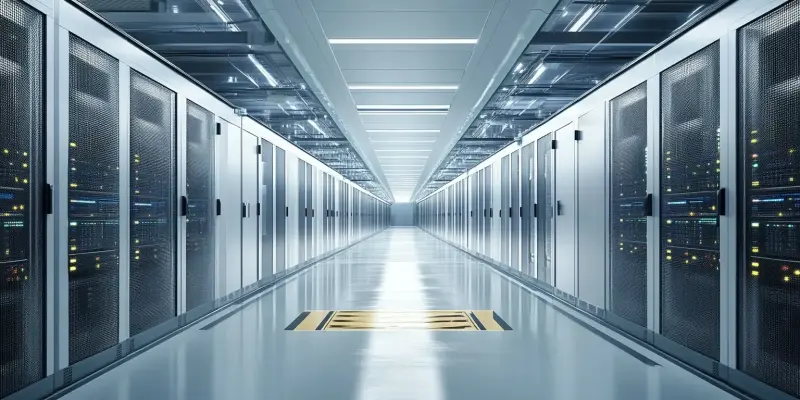The escalating demands of Artificial Intelligence (AI) technology have placed a significant strain on natural resources, particularly water and energy, raising urgent questions about sustainability. One standout example is found in Marseille, France, where three innovative data centers managed by Digital Realty are at the forefront of testing water-saving cooling methods. These initiatives are essential in a world where generative AI consumes water at an alarming rate, highlighting the critical need for sustainable practices within this rapidly expanding industry. The data centers in Marseille utilize an eco-friendly “river cooling” system, which employs naturally cool water drawn from an old coal mine. This method circumvents the need for traditional, energy-intensive air conditioning, leading to a notable 20% reduction in energy consumption. Amid increasing demands on data infrastructure, these savings herald the potential for enhanced efficiency and environmental responsibility.
The Environmental Impact of AI Hardware
One of the primary environmental challenges posed by the AI sector is the substantial energy and cooling requirements of AI hardware. Unlike traditional processors, AI chips tend to generate vast amounts of heat and require robust cooling systems to function effectively. Advanced AI hardware, such as Nvidia’s latest models, consumes hundreds of watts of power. Conventional cooling techniques, including air conditioning and adiabatic cooling, are common but becoming less viable due to the ever-growing energy demands associated with AI processing power.
This surge in power consumption is further complicated by the increasing reluctance of local communities to support the necessary infrastructure expansions. For instance, in Marseille, local authorities and activists have voiced concerns that the water used by Digital Realty’s data centers could be better spent on other community necessities like agriculture or urban maintenance. This debate underscores a broader issue of resource allocation and the potential misuse of eco-friendly initiatives as mere “greenwashing” tactics, ignoring the broader environmental impact of corporate operations.
Innovative Cooling Solutions
Against this backdrop, tech companies are compelled to explore alternative cooling methods to mitigate the environmental impacts of their burgeoning data centers. One notable approach is Microsoft’s use of ambient air cooling, especially in cooler regions like northern Europe. This method leverages the natural temperature of the environment to cool the data centers, which can be a highly effective and sustainable solution. However, ambient air cooling is not universally applicable, as it significantly depends on the local climate and weather conditions.
Another experimental cooling technique involves immersing components in a coolant resistant to water damage. While promising in terms of efficiency, this method has faced resistance due to the environmental concerns associated with the use of PFAS chemicals, which are known for their persistence in the environment and potential health risks. The limited deployment of this method is a testament to the complexities and trade-offs inherent in developing sustainable cooling solutions for the high-demand AI industry.
Local Opposition and Resource Allocation
The tension between technological advancement and local community needs is most starkly evident in the opposition faced by data centers in Marseille. Local authorities argue that the water utilized for cooling these data centers could instead support vital community projects. This contention highlights the broader issue of resource allocation and prioritization in the face of growing environmental challenges. The potential for companies to use environmentally friendly initiatives as a form of “greenwashing” further complicates this narrative, suggesting a need for more transparent and holistic approaches to sustainability.
Addressing these challenges necessitates not only innovative technological solutions but also collaborative efforts between corporations, governments, and local communities. It is only through such concerted efforts that the AI industry can hope to meet its energy and water demands in a manner that is truly sustainable and socially responsible.
The Path Forward
Amidst growing environmental concerns, tech companies are driven to find alternative cooling methods for their expanding data centers. Microsoft has adopted ambient air cooling, particularly in cooler regions like northern Europe, where the natural temperature of the environment is used to cool data centers. This approach can be highly effective and sustainable but isn’t universally applicable, as it heavily relies on local climate and weather conditions.
Another innovative method under exploration is immersing components in a coolant that resists water damage. While this technique shows promise in terms of efficiency, it faces scrutiny because of environmental concerns associated with PFAS chemicals. These chemicals are persistent in the environment and pose potential health risks. Consequently, the use of this method has been limited, highlighting the complexities and compromises involved in developing sustainable cooling solutions for the AI industry’s high demands. Tech companies continue to balance environmental impact, efficiency, and longevity as they innovate in data center cooling solutions.

